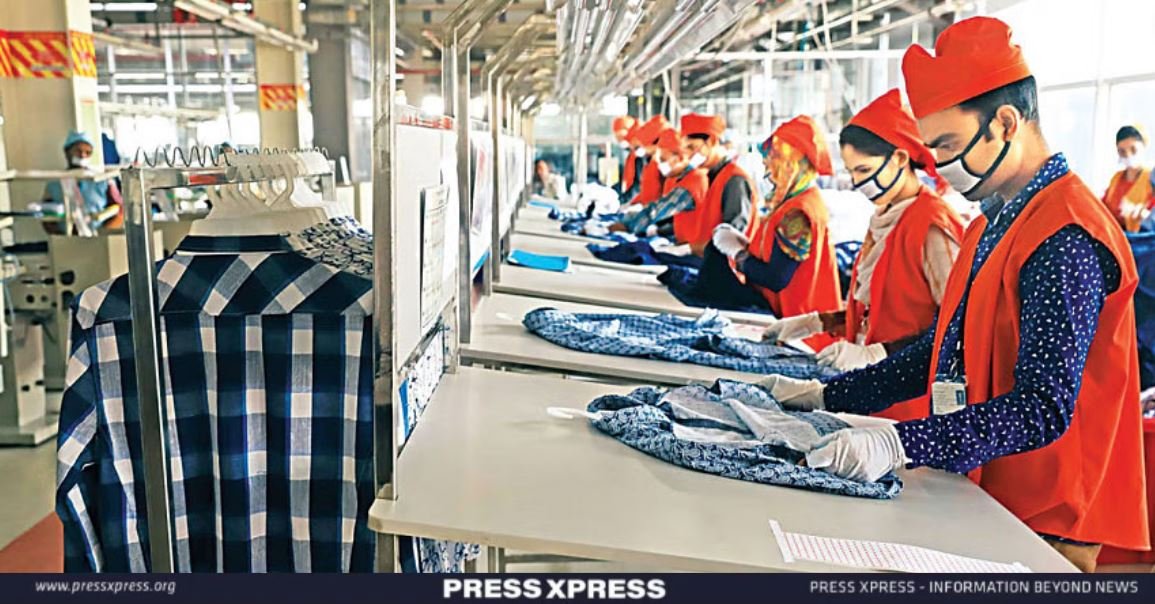Key highlights:
- During the first half of FY2024 (July-December), export earnings from Ready-Made Garments (RMG) saw a modest growth of 1.7 %.
- Bangladesh has showcased its competitive edge through apparel exports, contributing to a global market worth nearly $600 billion.
- To expand product diversity and enhance the value of exports, Bangladeshi exporters should venture into synthetic fiber-based garments.
By 2026, Bangladesh will no longer be classified as a least developed country (LDC), which will bring challenges such as the erosion of export preferences in key markets and the associated risk of export decline, particularly in RMG. To counter this, diversification into new product categories like high-value apparel, technical textiles, and home textiles can open up new markets and enhance profitability.
Prioritizing investment in synthetic fiber-based items and transitioning towards high-tech garment manufacturing is crucial. Manufacturers need incentives to produce synthetic fibers, and the government should spearhead robust stakeholder consultations to raise awareness among garment owners about the global market for synthetic fiber products. In summary, there must be a concerted effort toward product diversification.
Read more at: How India-Bangladesh Shared Riverways Bring Mutual Benefits?
Additionally, subsidies, tax exemptions, maintenance of a suppressed labor regime, inadequate factory compliance, and the presence of both legal and illegal by-product businesses (such as recycling scrap cloth items locally known as “jhut”) have played pivotal roles.
Bangladesh’s High-Value Apparel Market
During the first half of FY2024 (July-December), export earnings from Ready-Made Garments (RMG) saw a modest growth of 1.7 % compared to the corresponding period of FY2023. Conversely, non-RMG exports experienced a negative growth of (-) 3.8 % during the same period. Notably, Bangladesh has showcased its competitive edge through apparel exports, contributing to a global market worth nearly $600 billion.
When combined with textiles, the total market size reaches around $1 trillion. Bangladesh currently holds approximately 7.9 % of the global apparel export market, with China dominating the lion’s share at 31.7 %, followed by the EU at 27.1 %. Encouragingly, Bangladesh has made strides in penetrating the upmarket segment of the global high-value apparel market, alongside its traditional presence in retailers like Walmart, K-mart, Primark, and H&M.
Brands like GAP and ZARA are increasingly featuring Bangladesh’s apparel items. With China’s gradual withdrawal from lower and middle-end apparel markets, Bangladesh stands to capture a larger portion of the vacated market space, presenting ample opportunities for expansion in the global apparel market.

Embracing Non-Cotton Exports
Over the last 10 years, notable improvements have been observed, particularly in woven-RMG exports. The proportion of non-cotton items in woven wear, including manmade (MMF) and synthetic fiber-based items, has risen from 26.9% to 39.4% of the country’s total earnings from woven wear exports between FY2015 and FY2023.
However, the scenario for knitwear has remained relatively unchanged, with the share of non-cotton items hovering around 24% over the same period. In FY2023, earnings from cotton-based exports constituted approximately 70% of Bangladesh’s total apparel exports. In contrast, globally, cotton-based apparel represented only about 40% of the market, with non-cotton items comprising the remaining 60%.
In recent years, there has been a noticeable trend towards shifting away from cotton-based apparel towards MMF and synthetic fabric-based items in the global market. Bangladesh should capitalize on this emerging opportunity and take the necessary steps to secure a greater market share in the expanding non-cotton-based global apparel market.Top of Form

Synthetic Spinning: The Missing Link in Bangladesh’s Textile Empire
To expand product diversity and enhance the value of exports, Bangladeshi exporters should venture into synthetic fiber-based garments. Presently, Bangladesh imports over 10 million tons of polyester annually from China, Thailand, Indonesia, and India. Exploring the vast opportunities in synthetic spinning should be a priority for Bangladesh’s textile and garment exporters.
Synthetic yarns, primarily Polyester, Nylon, and Acrylic, are the focus. Polyester yarn, for instance, comes in two main types: spun and filament. Nylon and acrylic yarn come in filament forms.
Industrial production of polyester fibers or yarn involves two methods: using Polyethylene Terephthalate (PET) Chips or directly from Purified Terephthalic Acid & Mono ethylene Glycol (PTA & MEG), both derived from petroleum. Currently, spinners import PET Chips, making the price of synthetic yarn produced in Bangladesh less competitive.

Establishing synthetic spinning mills in Bangladesh requires a robust supply chain of raw materials, namely PTA & MEG, which necessitates significant investment. The government’s support is crucial, especially for setting up MEG plants to support mid-scale yarn manufacturing mills. Bangladesh’s Eastern Refinery Limited project in Chittagong could potentially expand to produce MEG from refined oil by-products, marking a significant milestone for Bangladesh’s textile industry.
Alternatively, producing MEG from natural coal is another viable option, requiring thorough research and development efforts by the government to support the synthetic spinning industry.
Ensuring the production of high-quality synthetic yarn in Bangladesh would undoubtedly bolster the country’s position in the global fashion market. Collaboration between the Bangladesh government and industry stakeholders is essential to discuss necessary investments and policy support for advancing synthetic yarn production.
Historically, the success of Bangladesh’s RMG industry can be attributed to favorable policies, government assistance, and various significant political-economic factors, including the accrual of substantial benefits in this sector through mechanisms like the now-defunct Multifibre Arrangement (MFA) quota and the Generalized System of Preferences (GSP).
While the industry has significantly contributed to Bangladesh’s economic growth, job creation, and poverty alleviation, challenges lie ahead, particularly with the impending transition out of the least developed country (LDC) status and the associated risks to export preferences.
To navigate these challenges and sustain growth, diversification into high-value apparel markets and non-cotton exports presents promising opportunities. Embracing synthetic fiber-based garments and investing in synthetic spinning capacity stand out as crucial steps to enhance product diversity and competitiveness.


